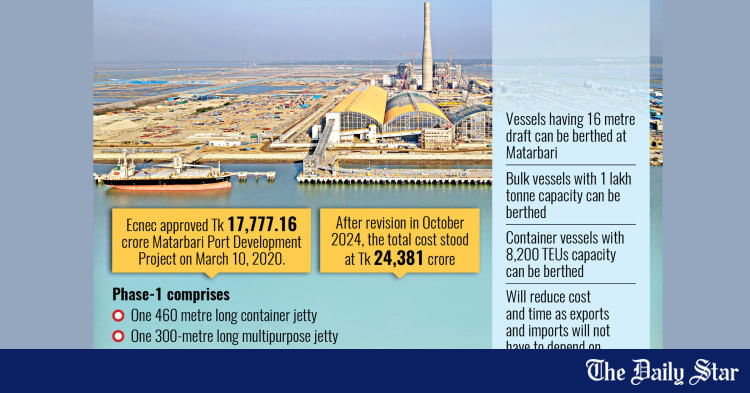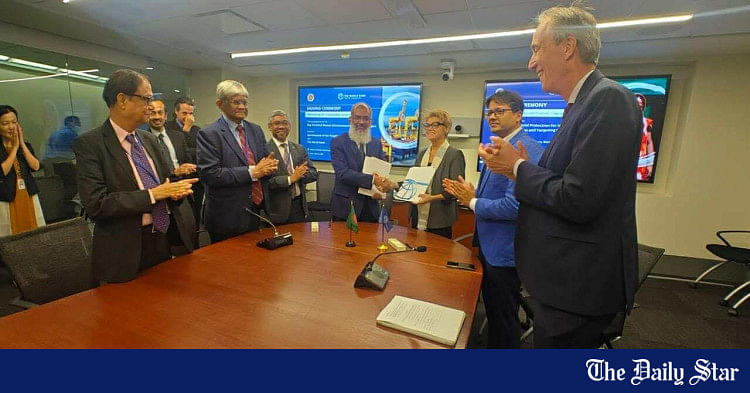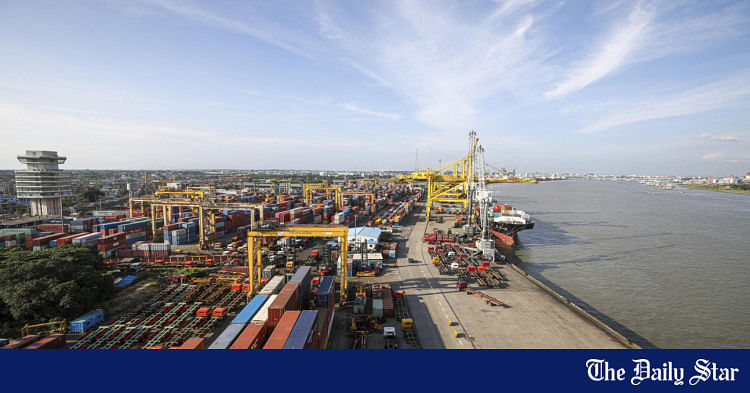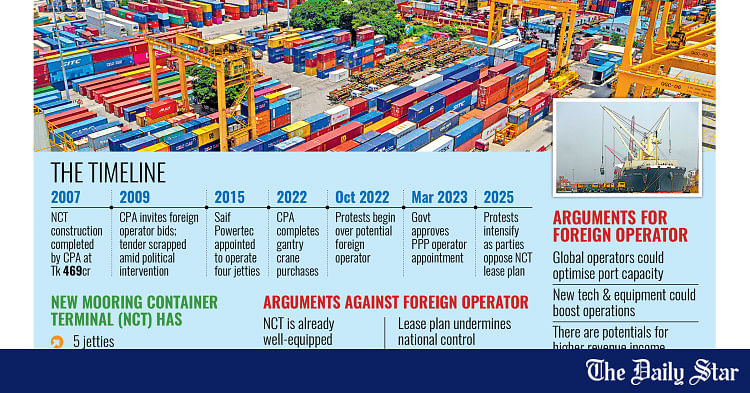- Copy to clipboard
- Thread starter
- #101
Saif
Senior Member
- Joined
- Jan 24, 2024
- Messages
- 15,397
- Reaction score
- 7,874
- Nation

- Residence

- Axis Group


China to upgrade Mongla port
The interim government on Sunday approved a project aiming at upgrading the container terminal at the Mongla port in Bagerhat with a loan of Tk 3,592.90 crore from China.
 www.newagebd.net
www.newagebd.net
China to upgrade Mongla port
Staff Correspondent 03 February, 2025, 00:41

Mongla port. | File photo
The interim government on Sunday approved a project aiming at upgrading the container terminal at the Mongla port in Bagerhat with a loan of Tk 3,592.90 crore from China.
The Bangladesh government will contribute the remaining Tk 475.33 crore to the overall project cost of Tk 4,068.23 crore approved by the executive committee of the National Economic Council at the Planning Commission at Agargaon in the capital Dhaka.
At a post-meeting briefing, planning adviser Wahiduddin Mahmud said that the port would be developed as a hub, serving the regional countries like Bhutan and Nepal.
China has long been showing a keen interest in financing the project, he said.
Shipping ministry officials said that the same project had been submitted to the ECNEC in 2020 seeking approval, but the proposal was sent back then.
Under the project now to be concluded in 2028, the port authorities will construct a container terminal with equipment, delivery yard, multi-storied car sheds, removal of sinking wreckages and improvement of main roads.
Lack of infrastructures in the port has failed to attract ships, with about 40 per cent of its berthing facility remaining unutilised.
At present, the port authorities have been implementing several projects, including the upgrading of Mongla port project at Tk 6,015 crore since 2020 with Tk 4,459 crore from an Indian loan.
The planning adviser said that foreign loans were bad, but those became burden if not invested in viable projects.
Fearing that the overall debt payment would face more pressure in the coming days due to the implementation of the mega projects by the ousted Awami League regime, he suggested higher revenue mobilisation by the National Board of Revenue.
The day’s meeting, presided over by chief adviser Muhammd Yunus, approved 13 projects at Tk 12,532.28 crore. Of the cost, Tk 4,097.23 crore will come from the local sources and Tk 7,328.95 crore from the foreign sources.
Of the approved 13 projects, nine are new projects while four are revised projects.
The other projects include Uttar Kattali catchment sanitation in Chattogram metropolis (Tk 2,797.22 crore), improved seed production and development of rice, wheat and corn, 3rd phase (Tk 474.68 crore), modernisation and development (2nd phase) of seed production, processing and distribution management of BADC (Tk 292.86 crore), food safety testing capacity development (Tk 2,409.70 crore), digging some four evaluation-cum-development wells of Titas and Kamta fields (Tk 1,255 crore), conducting three-seismic survey at Habiganj, Bakhrabad and Meghna fields (Tk 454.25 crore) and digging Sylhet-12 number well (oil well) (Tk 255.25 crore).
Staff Correspondent 03 February, 2025, 00:41
Mongla port. | File photo
The interim government on Sunday approved a project aiming at upgrading the container terminal at the Mongla port in Bagerhat with a loan of Tk 3,592.90 crore from China.
The Bangladesh government will contribute the remaining Tk 475.33 crore to the overall project cost of Tk 4,068.23 crore approved by the executive committee of the National Economic Council at the Planning Commission at Agargaon in the capital Dhaka.
At a post-meeting briefing, planning adviser Wahiduddin Mahmud said that the port would be developed as a hub, serving the regional countries like Bhutan and Nepal.
China has long been showing a keen interest in financing the project, he said.
Shipping ministry officials said that the same project had been submitted to the ECNEC in 2020 seeking approval, but the proposal was sent back then.
Under the project now to be concluded in 2028, the port authorities will construct a container terminal with equipment, delivery yard, multi-storied car sheds, removal of sinking wreckages and improvement of main roads.
Lack of infrastructures in the port has failed to attract ships, with about 40 per cent of its berthing facility remaining unutilised.
At present, the port authorities have been implementing several projects, including the upgrading of Mongla port project at Tk 6,015 crore since 2020 with Tk 4,459 crore from an Indian loan.
The planning adviser said that foreign loans were bad, but those became burden if not invested in viable projects.
Fearing that the overall debt payment would face more pressure in the coming days due to the implementation of the mega projects by the ousted Awami League regime, he suggested higher revenue mobilisation by the National Board of Revenue.
The day’s meeting, presided over by chief adviser Muhammd Yunus, approved 13 projects at Tk 12,532.28 crore. Of the cost, Tk 4,097.23 crore will come from the local sources and Tk 7,328.95 crore from the foreign sources.
Of the approved 13 projects, nine are new projects while four are revised projects.
The other projects include Uttar Kattali catchment sanitation in Chattogram metropolis (Tk 2,797.22 crore), improved seed production and development of rice, wheat and corn, 3rd phase (Tk 474.68 crore), modernisation and development (2nd phase) of seed production, processing and distribution management of BADC (Tk 292.86 crore), food safety testing capacity development (Tk 2,409.70 crore), digging some four evaluation-cum-development wells of Titas and Kamta fields (Tk 1,255 crore), conducting three-seismic survey at Habiganj, Bakhrabad and Meghna fields (Tk 454.25 crore) and digging Sylhet-12 number well (oil well) (Tk 255.25 crore).












